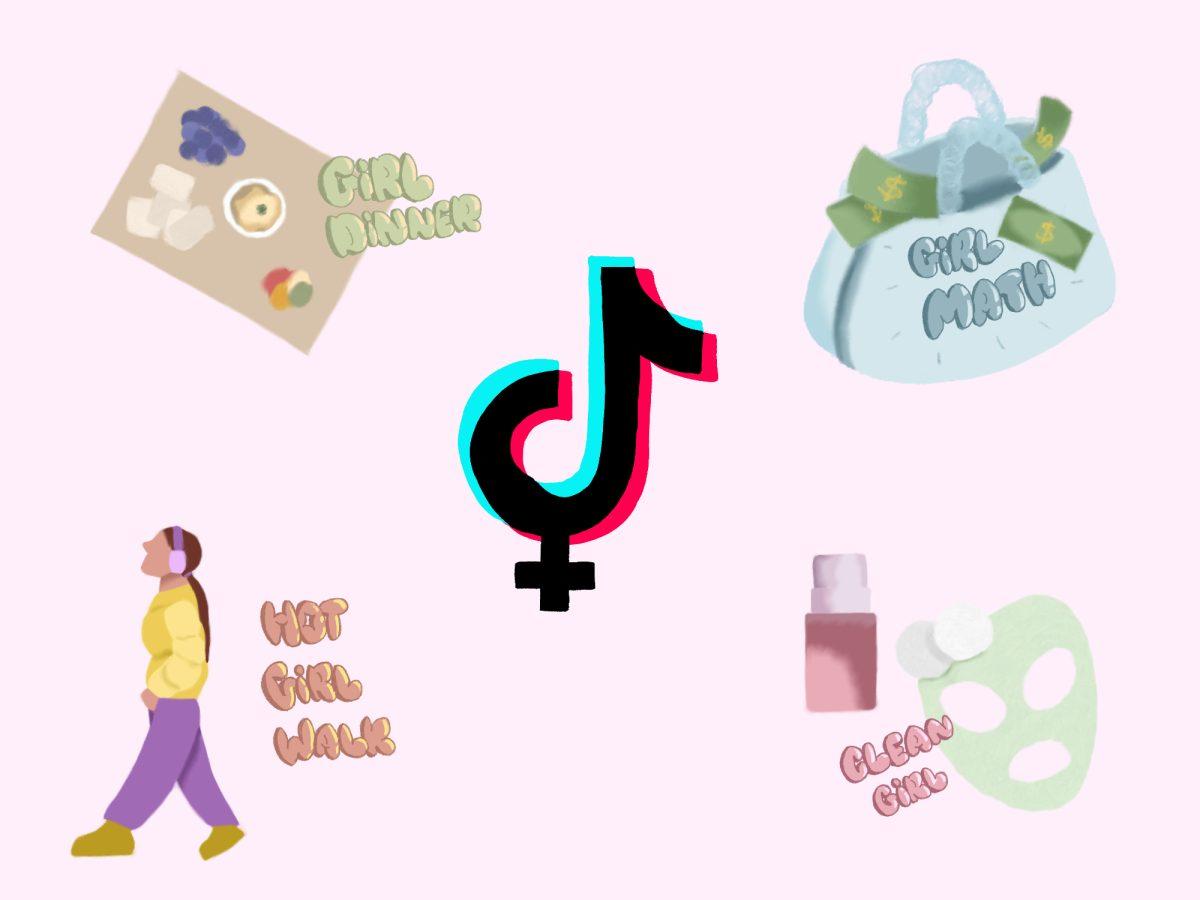The rise of social media platforms has had enormous impacts on daily lives, especially for teenagers who spend most of their time scrolling endlessly on TikTok, X, (formerly known as Twitter) and other popular sites. Lately, many people, specifically women, have been romanticizing mundane errands or hobbies by reinforcing them with girlhood. People on X love to share these experiences: “eating my girl dinner, taking my hot girl walk, listening to my sad girl music, reading my feral girl books, going out dancing with my girlianas, getting bevvies with my girlipops, every day a slow march towards death (Womanhood)…” (@em_kupor on X).
For many, reading this tweet might seem like a word vomit of random terms haphazardly thrown together. However, this past summer, TikTok has been the main platform that has evolved to showcase a new aesthetic of what it means to be a girl for female users, offering a new personality option for us to choose every day. Whether it’s being “THAT” girl by restocking the fridge and deep cleaning an already spotless house or following the “clean girl aesthetic” with a 62-step skincare routine, complete with toners, face masks, and serums, microtrends are shoved into women’s faces every time they open the app. Influencers on TikTok have promoted this idea of labeling a girl’s personality through microtrends such as “girl dinners” (which involve putting together random snacks or foods found around the house to satisfy a specific taste craving) or “girl math” (a way to justify spending habits and unnecessary or expensive purchases).
These trends, which usually become viral through a single video, mirror most of today’s journalism and news. With the popularity of TikTok and Instagram, any post can easily become viral and garner an outburst of attention on topics that, usually, are not even newsworthy. Because of this, it’s no coincidence that the subject of scrutiny is almost frequently young women and their idiosyncrasies. The discourse surrounding these topics eventually amounts to equating girls and their habits to unusual, weird, or wrong, even when the intended audience of the post were people who understood its stupidity.
At surface level, these trends are harmless and are meant to be a diversion from the reality of what womanhood is: paying bills, staying in a clean environment, self-care, etc. However, these trends can become problematic in a couple of ways. First, it perpetuates most gender stereotypes. Many of these trends revolve around behaviors that would generally be considered ordinary or uninteresting. However, by labeling activities such as going for a walk, enjoying a simple meal, or adopting a particular aesthetic as “girl-coded,” we inadvertently reinforce traditional gender roles that suggest that women should be focused on trivial matters or that their activities need special labels. Moreover, these trends infantilize women. The very use of the term “girl” to describe tasks that mainly adult women are performing is questionable. It implies that women should remain in a state of perpetual youth and immaturity. It also sends the message that being a woman is somehow less appealing than being a girl. For instance, using the phrase “woman dinner” paints an image of a tired adult woman listlessly eating her dinner before loading the dishes and cleaning the kitchen.
So, go ahead, indulge in a “girl dinner” or two and enjoy your “hot girl walks.” But always remember to eventually remove yourself from the confines of these microtrends and truly experience the journey (and stress) that comes along with transforming from a girl to a woman. And if it ever becomes too much, don’t hesitate to slap on a face mask and take a little TikTok break!






































































